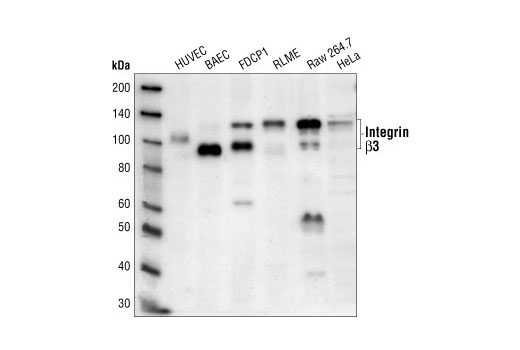Introduction
In the intricate realm of molecular biology, Western blotting stands out as a cornerstone technique for proteomics research. At the heart of this technique lies the primary antibody incubation step, a critical aspect that demands precise execution to guarantee accurate and informative results. This article ventures into the depths of Western blotting, guiding researchers through the complexities of primary antibody incubation, including its duration, optimization strategies, and troubleshooting tips.

Image: www.victoriana.com
Understanding Western Blotting and the Role of Primary Antibody
Western blotting, also known as immunoblotting, empowers researchers to scrutinize the protein landscape of a biological sample. The process begins with protein extraction and separation via electrophoresis, followed by protein transfer onto a solid membrane. The membrane serves as a platform for subsequent antibody-based detection of specific proteins of interest.
The primary antibody, a highly specific reagent, plays a pivotal role in Western blotting. Its affinity for the target protein allows for precise recognition and binding. Once incubated with the membrane, the primary antibody selectively attaches itself to the target protein, forming the foundation for downstream detection and quantification.
Optimal Incubation Time for Primary Antibody
The duration of primary antibody incubation is a crucial factor influencing the sensitivity and specificity of Western blotting. Establishing an optimal incubation time is paramount to achieving reliable results. Various factors, including the antibody’s characteristics, target protein abundance, and experimental conditions, can dictate the appropriate incubation period.
- Antibody Concentration: Lower antibody concentrations may require extended incubation times to ensure adequate binding to the target protein. Conversely, higher antibody concentrations can accelerate the binding process, allowing for shorter incubation times.
- Target Protein Abundance: Abundant target proteins facilitate efficient antibody binding, enabling shorter incubation times. In contrast, low-abundance target proteins may necessitate longer incubation periods to enhance signal strength.
- Experimental Conditions: Temperature, agitation, and buffer composition can influence antibody binding kinetics. For instance, lower temperatures may slow down the binding process, necessitating longer incubation times.
Strategies for Optimizing Primary Antibody Incubation
Optimizing primary antibody incubation involves a nuanced interplay of several parameters. By adhering to these guidelines, researchers can maximize the efficacy and precision of their Western blotting experiments:
- Antibody Validation: Prior to incubation, thoroughly validate the primary antibody’s specificity and sensitivity using appropriate controls or published literature.
- Blocking: Pre-incubate the membrane with a blocking buffer to minimize non-specific binding and improve signal-to-noise ratio.
- Antibody Titration: Perform an antibody titration experiment to determine the optimal antibody concentration that yields clear and specific signals.
- Incubation Temperature: Generally, room temperature incubation (22-25°C) is suitable for most primary antibodies. However, specific antibodies may require alternative incubation temperatures, as per the manufacturer’s instructions.
- Incubation Duration: Optimize incubation duration empirically, typically ranging from 1-24 hours, depending on various factors discussed earlier.
- Agitation: Gentle agitation during incubation helps ensure uniform antibody distribution and facilitates binding efficiency.

Image: www.cellsignal.com
Troubleshooting Incubation-Related Issues
- Weak Signals: Inadequate antibody binding can result in weak signals. Check antibody specificity and concentration, optimize blocking conditions, and increase incubation time or temperature.
- Non-Specific Signals: High background or non-specific binding can obscure true signals. Improve blocking, reduce antibody concentration, and shorten incubation time.
- Over-Incubation: Prolonged incubation can lead to non-specific binding or antibody degradation. Adhere to recommended incubation durations and monitor signals at various time points.
- Antibody Cross-Reactivity: Ensure antibody specificity to avoid cross-reaction with non-target proteins. Verify antibody validation data and consider using highly specific antibodies.
Advances in Primary Antibody Incubation Techniques
Recent advancements in Western blotting technology have introduced novel strategies to enhance the efficiency and specificity of primary antibody incubation.
- Antibody Optimization Kits: Commercial kits provide pre-optimized antibody conditions, including dilution factors, blocking reagents, and incubation parameters, simplifying the optimization process.
- Automated Incubation Systems: Automated platforms offer precise control over incubation conditions, such as temperature, agitation, and duration, ensuring consistency and reproducibility.
- Microfluidic Devices: Microfluidic chips enable precise manipulation of reagents and samples, facilitating rapid and efficient antibody binding within controlled microenvironments.
How Long To Incubate Primary Antibody Western Blot
Conclusion
The duration of primary antibody incubation is a crucial aspect of Western blotting, significantly impacting the sensitivity and specificity of the technique. Understanding the factors influencing optimal incubation time, employing effective optimization strategies, and implementing advanced techniques empower researchers to derive the most insightful and accurate results from their protein analysis endeavors. By mastering the intricacies of primary antibody incubation, Western blotting becomes an indispensable tool for exploring the complex world of proteins and unraveling the molecular underpinnings of biological systems.